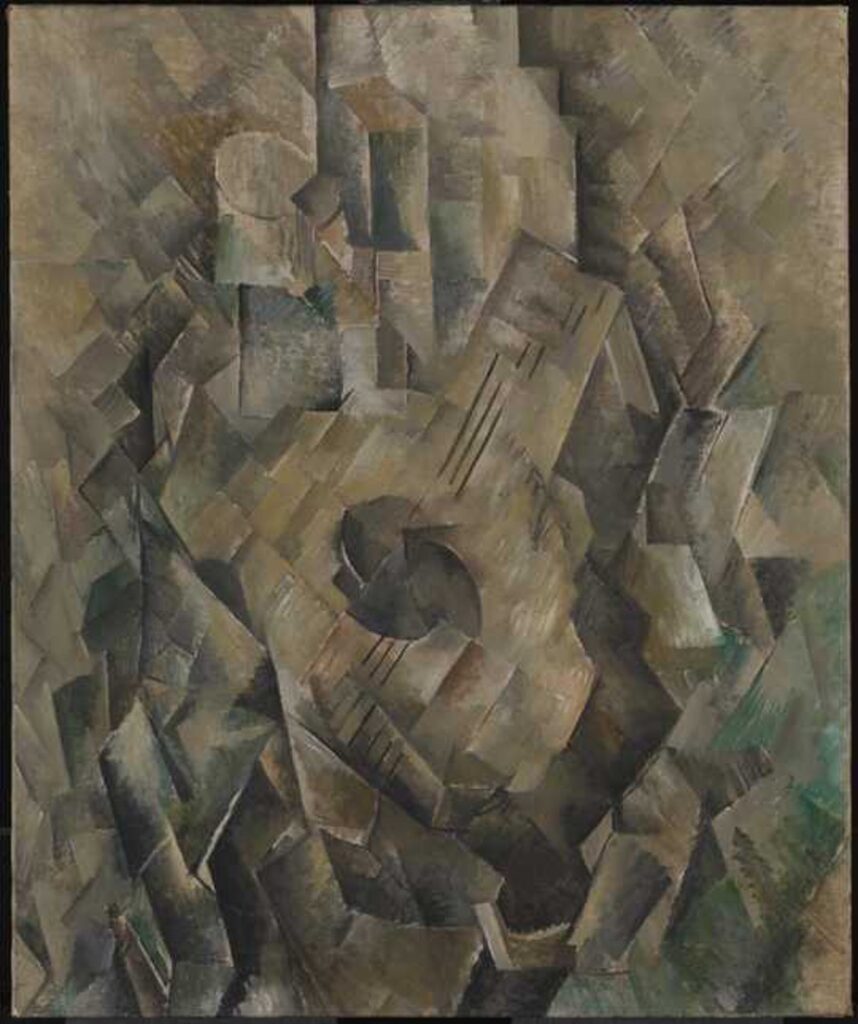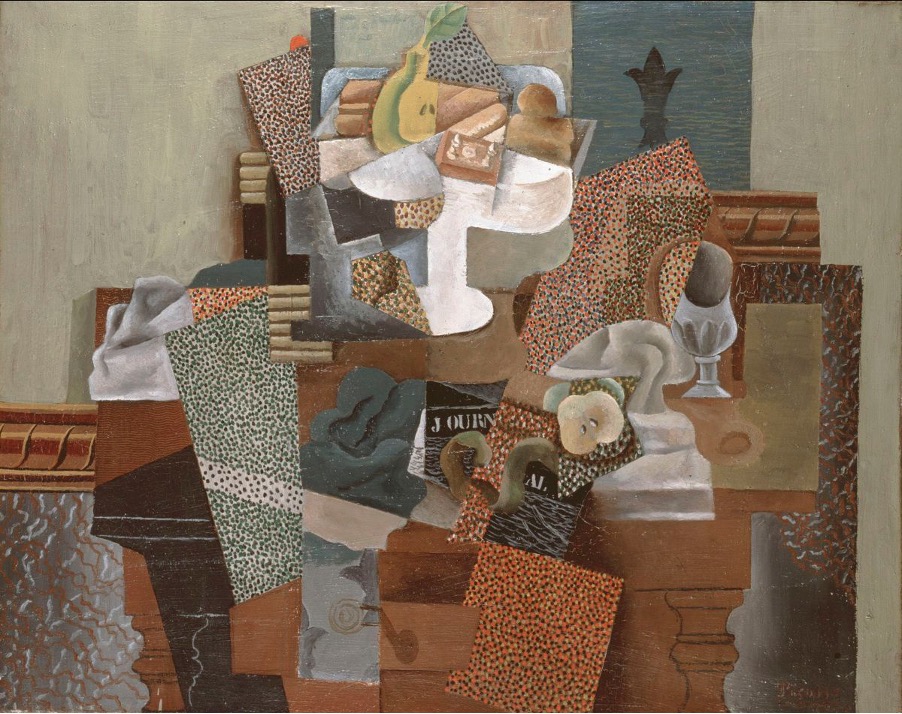
Imagine……. just over a century ago, two artists working together, experimenting with the notion that maybe there was a new way to paint the real world in front of them; one that might show more of a subject than an image made from one, fixed, view (as a photograph does). Pablo Picasso and Georges Braque experimented with the idea of combining many viewpoints of the same subject on to the same picture surface. The resulting style became known as Cubism, quite possibly the most important period of art ever!
When evaluating the impact that Cubism had on art, we shouldn’t just think of the art that was produced during that period (1907-1914), we should also think about all of the non representational artwork produced in the western world since, when an artist has had the freedom to present the elements of their subject in which ever way they chose.
In the still life painting, Mandora, by Braque, we can make out that there is an instrument featured, and as we look harder, we can probably find the musicians legs, bent at the knees, an arm, a hand playing the strings, a jacket, a head and so on. A more recognisable way of illustrating someone playing this instrument would be as in this painting, but it could be argued that it is totally static, whereas Braque’s painting has movement, showing the musician playing over a period of time.
Mandora, painted between 1909-10, could easily be mistaken for a work by Picasso. For some of the Cubist period, the two artists followed the same set of rules for making their paintings. They used neutral colours and didn’t signing their works, a reaction against the Impressionists, who they believed had become obsessed with showing their own individuality and emotions, rather than using a common visual language. Colour did however come back into Picasso and Braque’s work before their seven year period of experimentation came to an end.

Here are a few more links to explore:
Have a look at another of the learning resources on this site, Still life composition. Can you see why some people say that Cezanne was a big influence on the ideas of Cubism, and how the work of artists like Mary Fedden and Michael Craig Martin might have been influenced by the movement?
Finally, the Tate has a good Cubism overview on their website with these links to descriptions of Analytical Cubism and Synthetic Cubism.